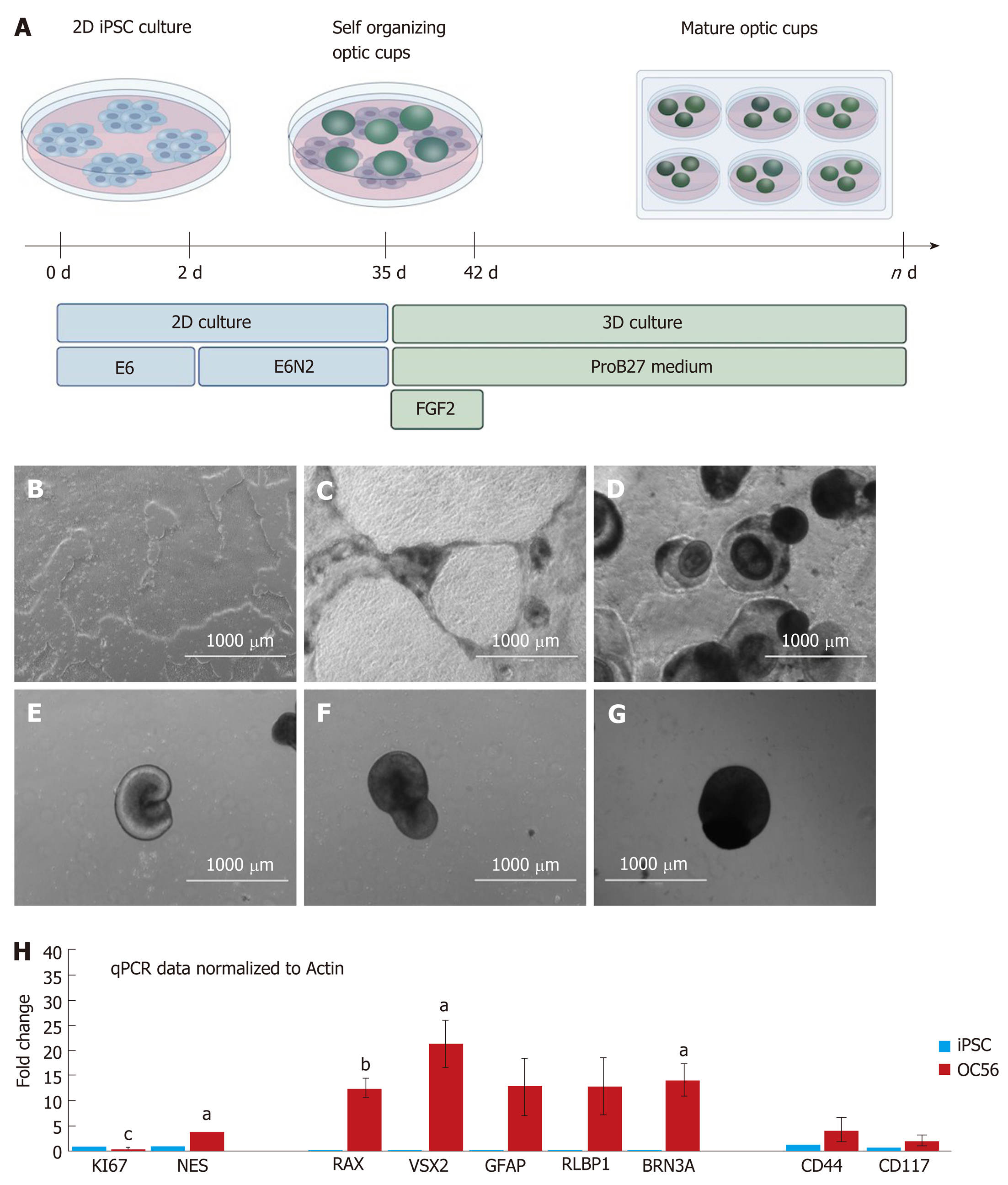Copyright
©The Author(s) 2020.
World J Stem Cells. Oct 26, 2020; 12(10): 1171-1183
Published online Oct 26, 2020. doi: 10.4252/wjsc.v12.i10.1171
Published online Oct 26, 2020. doi: 10.4252/wjsc.v12.i10.1171
Figure 1 Differentiation of human induced pluripotent stem cells into retinal organoids and validation of retinal ganglion cell- and Müller glia-specific markers.
A: Schematic overview of the differentiation protocol, including key steps, media and growth factor components; B: Monolayer of human induced pluripotent stem cell (hiPSC), 70%-80% confluent at time of induced differentiation; C: At d6 after induction, dark pigmented areas emerge; D: At d14 after induction, dark areas form 3D structures on top of the cell monolayer; E: At d20 after induction, optic vesicles form on the monolayer; F: D35 after induction when the optic vesicles are removed from the monolayer of cells; G: D56 retinal organoids (ROs) in non-adherent culture before analyses. Properly developed optic cups are spheroidal in form. Structures without a smooth periphery have not properly developed and were discarded; H: Quantitative PCR analyses for the proliferation marker Ki67 showing decreased expression in ROs at day 56 (red bar) compared with hiPSC (blue bar). Increased expression of the neural progenitor marker NESTIN in RGs compared to hiPSC and increased expression of the retinal ganglion cell and Müller glia markers RAX, VSX2, GFAP, RLBP1, BRN3A, CD44 & CD117 in RGs. Statistically significant differences are labeled (aP < 0.05; bP <0.01 and cP < 0.001). iPSC: Induced pluripotent stem cell.
-
Citation: Freude KK, Saruhanian S, McCauley A, Paterson C, Odette M, Oostenink A, Hyttel P, Gillies M, Haukedal H, Kolko M. Enrichment of retinal ganglion and Müller glia progenitors from retinal organoids derived from human induced pluripotent stem
cells - possibilities and current limitations. World J Stem Cells 2020; 12(10): 1171-1183 - URL: https://www.wjgnet.com/1948-0210/full/v12/i10/1171.htm
- DOI: https://dx.doi.org/10.4252/wjsc.v12.i10.1171









